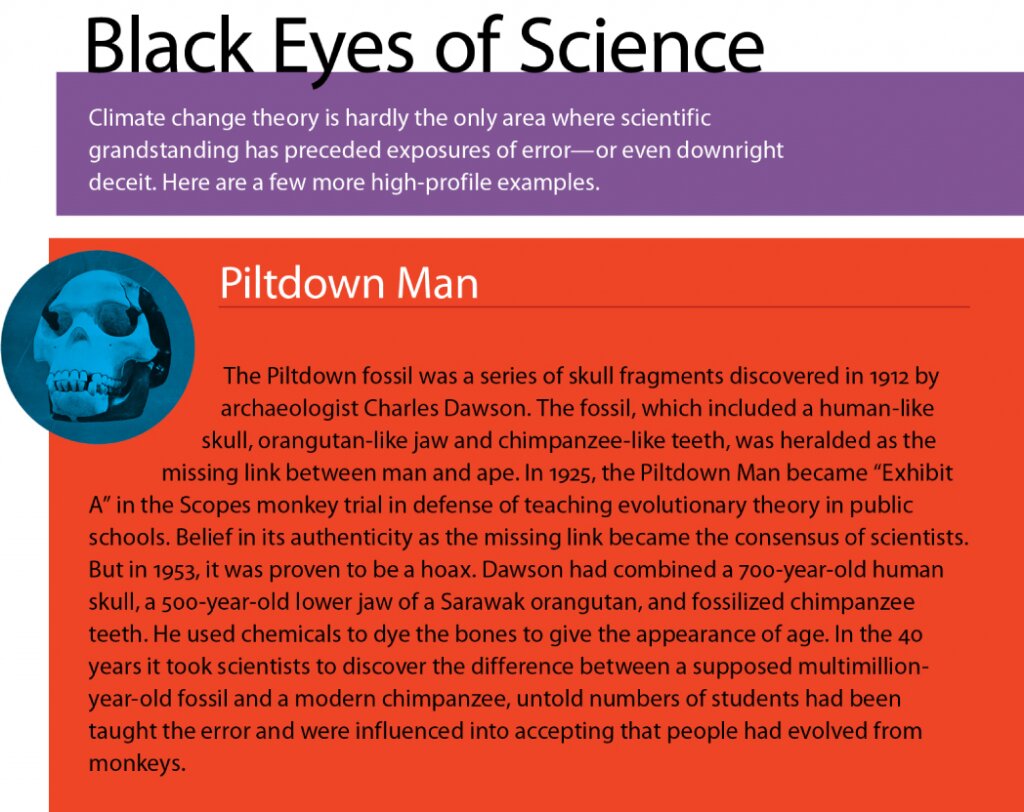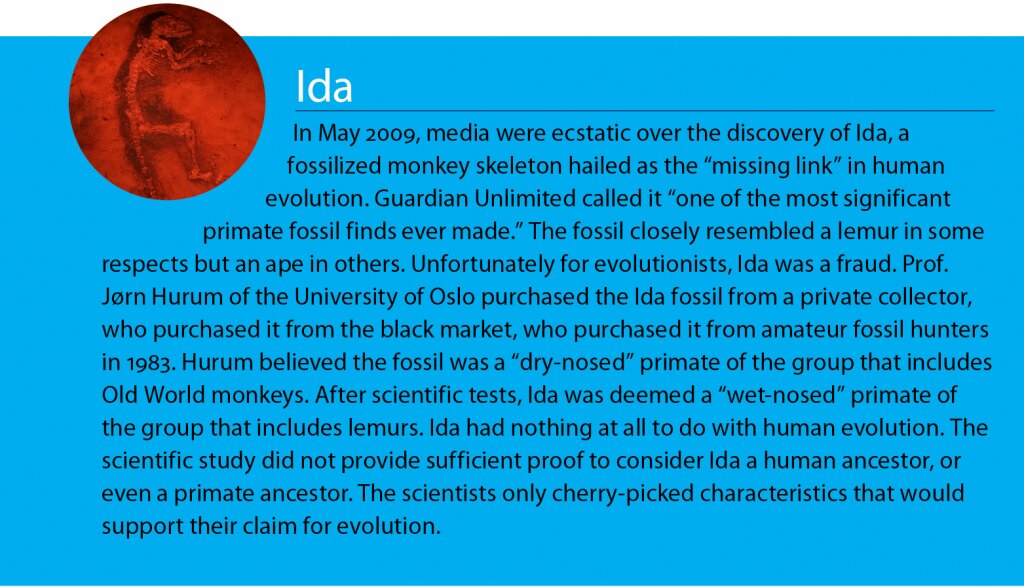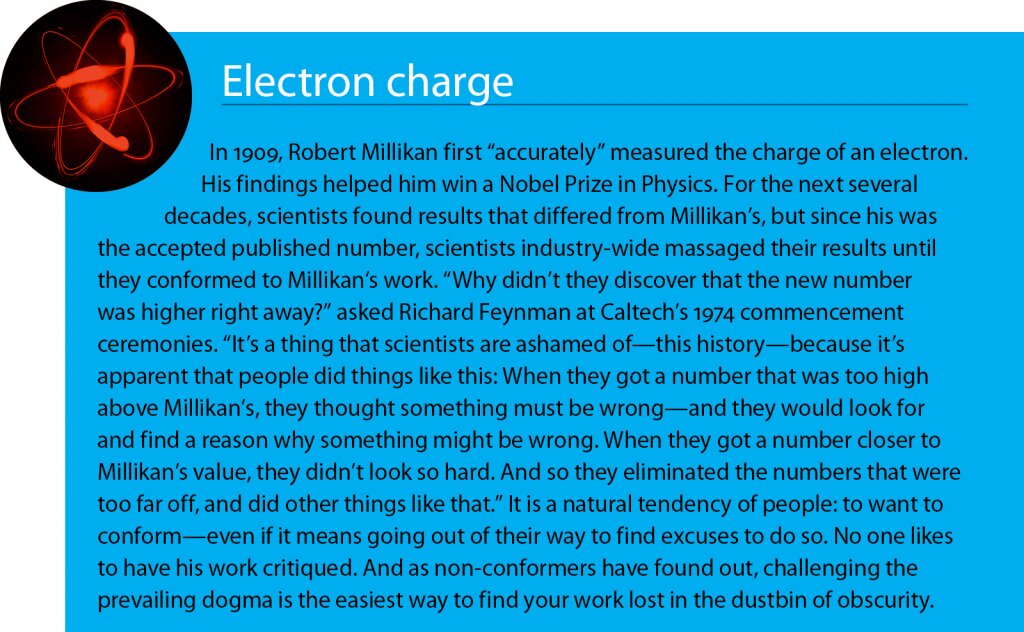‘Because I Said So’
What should be done to those who question the belief that human activity is causing catastrophic global climate change?
Environmental activist Robert F. Kennedy Jr. (nephew of the late president) recently said some of such people are “treasonous” and should be in jail with other criminals. Similarly, climatologist James Hansen, who was nasa’s top climate expert for over a decade, said questioners of the hypothesis should face criminal trial for “high crimes against humanity.” For Richard Parncutt, a professor at the University of Graz in Austria, however, prison is not punishment enough. In 2012, he said: “I propose that the death penalty is appropriate for influential GW [Global Warming] deniers.”
More mainstream activists generally don’t call for prison or execution, but still work to silence all questioners. In 2007, The Weather Channel’s climate guru called for stripping certification from unbelieving meteorologists. A Senate report that year showed that unconvinced scientists routinely faced threats and intimidation by proponents. In 2013, Reddit’s /r/science forum—which, with five times more subscribers than the New York Times, has become the front line of science-public interface—banned climate change questioners from discussions and said newspapers should follow its lead. A few months later, in his State of the Union address, United States President Barack Obama said that “climate change is a fact” and “the debate is settled.”
This desire to silence, imprison or even kill opposition raises specific questions about climate change. It also raises broad questions applicable to all of science.

Why Is Climate Alarmism Questioned?
The main reason some question the belief that human activity is causing catastrophic climate change is that some of the science behind the hypothesis is thin—to put it mildly.
Historic evidence shows that Earth’s climate has always warmed and cooled—sometimes abruptly. Most of these changes came long before the Industrial Age. Little evidence supports the notion that current fluctuations are unordinary. Prof. R. Timothy Patterson, director of the Ottawa-Carleton Geoscience Center at Carleton University, wrote: “Climate stability has never been a feature of planet Earth.” The world’s climate “changes continually and, at times, quite rapidly,” he wrote. “Many times in the past, temperatures were far higher than today, and occasionally, temperatures were colder. As recently as 6,000 years ago, it was about 3°C warmer than now. Ten thousand years ago, while the world was coming out of the thousand-year-long ‘Younger Dryas’ cold episode, temperatures rose as much as 6°C in a decade—100 times faster than the past century’s 0.6°C warming that has so upset environmentalists” (National Post, June 20, 2007).
Another thin part of the anthropogenic global warming (agw) hypothesis lies in claims that rising CO2 levels from human activity drive up the atmosphere’s temperature in a clear instance of cause-and-effect. Such experts as geophysicist and retired astronaut Walter Cunningham say this claim is faulty because temperature increases have often come before boosts in CO2 levels. “[W]e cannot be sure which is cause and which is effect,” he wrote in the July-August 2008 issue of Launch. “Historically, temperature increases have preceded high CO2 levels, and there have been periods when atmospheric CO2 levels were as much as 16 times what they are now, periods characterized not by warming but by glaciation.”
Ian Plimer, professor of Mining Geology at the University of Adelaide, South Australia, also questions the link between CO2 and temperature. In his book Heaven and Earth: Global Warming, The Missing Science, he shows that from 1860 to 1875, temperatures went up. They then fell from 1875 to 1890, increased until 1903, then fell again until 1918. From 1918 to 1941, they sharply rose—then cooled again until 1976. CO2 emissions were much lower at the start of the 20th century than they are now. So why were the amount and rates of warming greater then? Why is the Arctic now cooler than it was in the 1920s and 1930s, when carbon emissions were much lower?
From 2000 to 2010, mankind added about 110 billion tons of CO2 to the atmosphere. That’s more than a quarter of the total since the start of the Industrial Revolution in 1750. Yet, during that decade, there was no statistically significant increase in global temperatures.
Also problematic is the agw claim that carbon dioxide is a toxic, “industrial” gas that is having a catastrophic effect on the climate. CO2 is a natural, trace gas that currently constitutes just 4 one-hundredths of 1 percent of the planet’s atmosphere—far less than during other epochs. “At the current level of 400 parts per million, we still live in a CO2-starved world,” says Climate Change Reconsidered II, a report written in 2013 by a team of 50 scientists on the Nongovernmental International Panel on Climate Change (nipcc). “Atmospheric levels (of CO2) 15 times greater existed during the pre-Cambrian period (about 550 million years ago) without known adverse effects,” the report says.
Atmospheric scientist Robert L. Scotto says green activists also overstate mankind’s contribution to CO2 levels, and understate that of the sun: “Based on the laws of physics, the effect on temperature of man’s contribution to atmospheric CO2 levels is minuscule and indiscernible from the natural variability caused in large part by changes in solar energy output.” The fact that Mars, Pluto and Jupiter—upon which there are no carbon emitting factories—are currently heating up strengthens the view that the sun is largely responsible. Man’s CO2 emissions are also paltry compared to the amount released into the atmosphere byvegetation and the oceans.
Moreover, carbon dioxide is actually vital to life on the planet. “CO2 is a vital nutrient used by plants in photosynthesis,” the nipcc report stated. “Increasing CO2 in the atmosphere ‘greens’ the planet and helps feed the growing human population.”
Do these points resolve the controversy? Do they mean mankind’s CO2 emissions are not potentially dangerous? Do they mean no further study into climate change is needed?
No. They do not settle the questions or close the book. They are among many issues that have not been examined to the satisfaction of Patterson, Plimer, Cunningham, Scotto, the nipcc and a rapidly growing counter movement.

Why So Many Scandals?
Another reason some question the hypothesis of catastrophic climate change is that many of its lead advocates have been rocked by serious scandals.
In 2009, thousands of documents were leaked from the University of East Anglia Climatic Research Unit (cru). They revealed years of data manipulation, suppression and fraud by prominent climate scientists. The massive scandal, nicknamed Climategate, revealed three main themes: First, many scientists privately admit to each other that parts of the data are flimsy and require manipulation if they are to support the idea of severe man-made climate change. Second, many leading climate scientists see climate change as more of a political cause than a scientific pursuit. Third, many such scientists hide underlying data if it does not support the cause.
If the science is sure and settled, why would this manipulation and antiscientific behavior be needed to “prove” it? Climategate has been called “the worst scandal of this generation” and “the biggest scam in history.” Yet it was downplayed by climate activists and whitewashed or ignored by most media and politicians. Most activists call the revelations “irrelevant.”
But are they irrelevant? In one leaked e-mail, climatologist Kevin Trenberth wrote: “The fact is that we can’t account for the lack of warming at the moment and it is a travesty that we can’t.” In another, cru chief P. D. Jones wrote to climatologists Michael Mann, Raymond Bradley and Malcolm Hughes: “I’ve just completed Mike’s nature trick of adding in the real temps to each series for the last 20 years (i.e. from 1981 onwards) … to hide the decline.”
It was use of this “trick” that had enabled Mann to produce the now infamous “hockey stick” graph. Gathering data from ice cores, tree rings, lake sediments and corals, his crew graphed global temperature over the past thousand years. Their graph showed a long, mostly flat line for the years from 800 to 1900 (the handle of the hockey stick), then a sudden upward spike (the upturned blade). It seemed to pin warming firmly on industrialization and became a fixture of global warming alarmism.
But the problem is that the graph was the result of manipulation—or, as Jones said, a “trick.” Mann had massaged the data to get rid of a pesky time of preindustrial warmth called the Medieval Warm Period that occurred from about a.d. 1000 to 1300. Just after this period came the Little Ice Age, which lasted until the late 1800s. Does this mean 20th century warming could be largely a natural recovery from those cold years? Mann’s trick, which buried around seven centuries of climate history, tries to silence such questions.
In 2011, Climategate 2.0 broke. A new batch of 5,000 e-mails was leaked to the public showing the same themes as the first batch. “I have been talking w/ folks in the states about finding an investigative journalist to investigate and expose [skeptical scientist Steve McIntyre],” wrote Mann in one leaked e-mail. “The trick may be to decide on the main message and use that to guid[e] what’s included and what is left out [of ipcc reports],” wrote Jonathan Overpeck, coordinating lead author for the most recent climate assessment by the United Nations Intergovernmental Panel onClimate Change (ipcc), in another.
Then there is the famous “97 percent consensus” figure—one of the most frequently cited arguments of climate alarmists: Let’s not get into looking at the facts; those are established; 97 percent of all scientists agree. That number comes from a group led by John Cook that claims to have analyzed almost 12,000 peer-reviewed climate studies to find that 97 percent of them endorsed the view that humans are causing severe global climate change.
But shortly after Cook’s meta-study was published, investigative journalists at Popular Technology produced evidence showing that his crew had doctored the results by misclassifying many “skeptic” papers as consensus papers, cherry-picking data and asking misleading questions. Popular Technology asked many of the scientists whose studies Cook had lumped in with the “consensus” if that representation of their work was accurate. Here are a few of the replies: “Nope … it is not an accurate representation.” “That is not an accurate representation of my paper.” “It would be incorrect to claim that our paper was an endorsement of CO2-induced global warming.” “Cook et al. (2013) is based on a straw man argument …. What my papers say is that … 40-70 percent of the global warming observed from 1900 to 2000 was induced by the sun.” “Certainly not correct and certainly misleading.”
The “97 percent” claim also ignores 60 scientists who published a document in 2006 lambasting the theory of agw. And it ignores the international panel of more than 700 prominent scientists on the December 2007 Senate report. This group of climatologists, geologists, oceanographers, biologists, glaciologists, biogeographers, meteorologists, economists, chemists, environmental scientists, physicists, paleo-climatologists and other scientists signed a letter saying climate change was a well-known natural phenomenon. Many of them were current or former members of the ipcc.
Yet the “97 percent consensus” remains a mantra of climate change activists, while the Popular Technology piece, the 2006 document and the 2007 Senate report go largely ignored.
Climate change was delivered its most recent black eye in January 2015, just after all the jubilant claims by alarmists that 2014 had been “the hottest year on record.” One of the key regions warming especially fast was a large swath of South America. Researcher Paul Homewood compared the published temperatures for the three weather stations in Paraguay against the temperatures that were originally recorded. In all three cases, he found the data had been doctored to show warming where there actually was none. Homewood then turned his attention to the weather stations between Canada and the heart of Siberia. Again, in almost every case, he discovered that the same one-way upward temperature adjustments had been made. The Telegraph said this “fiddling with temperature data” wasn’t just the biggest of all climate change scandals, but “the biggest science scandal ever” (February 7).
It seems that the more the climate data is scrutinized, the more doctoring, manipulation and data massaging is exposed.

Why Is It Blasphemy to Question?
When the thin science is placed alongside the scandals, and then considered in light of the fanatic efforts to silence questioners, a worrying picture emerges: Belief in climate change has departed from science and become something more like a religious faith.
It bears all hallmarks of a man-made religion: a caste of priests and prophets, an irrational set of beliefs which adherents cling to tenaciously, abuse of authority and intimidation of any dissent. It even has plenty of sacred texts.
When believers are confronted with evidence that disproves or questions their dogma—like, for example, the study published in March 2013 showing that global temperatures had been static for 15 years even though greenhouse-gas emissions during that time had soared—it only seems to strengthen their piety. The “persecution” fortifies their resolve. Many adherents seem driven by a faith just as blind as that in some religionists they are so quick to criticize.
“True believers,” Cunningham said, “are beyond being interested in evidence; it is impossible to reason [people] out of positions they have not been reasoned into.”
Do calls for investigating and exposing skeptics sound like objective scientists, or like the Puritans who ran the Salem witch hunts? Do demands to suppress heresy sound like unbiased researchers, or like religious extremists? Do suggestions to execute deniers sound like experts motivated by reason, or like the cries of Catholic Church leaders during the Inquisitions?
Clearly, such calls and demands do not sound like the voice of science. “Science is facts,” said French physicist Henri Poincare, and “just as houses are made of stones, so is science made of facts.”
That means science is apolitical and welcomes prodding, scrutiny and debate. Its focus is on measurable, pressure-tested evidence. Its love is not for religious dogma, but for facts. Its goal is not to prove a hypothesis, but to test it in order to see whether it is true or untrue. It is not arrogantly confident, but humbly aware of its limitations. Since science is concerned, not with courting agendas but with discovering truth, scientists are unbiased, transparent, objective, and receptive to criticism and investigation.
The climate change debate is being dominated not by scientists, but by pseudo-scientist ideology-driven zealots. They approach it backward, with a conclusion firmly in mind. Whatever they can contort into supporting the hypothesis, they keep. All else they often reject or downplay. The facts are made submissive to the conclusion.
And climate change is not the only topic that has been thusly hijacked. In the world of academia, there is one person who is more ridiculed, blackballed and ostracized than a climate skeptic: a questioner of the theory of evolution.

‘Science Falsely So Called’
Long before the climate change hypothesis or the evolutionary theory were hatched, the Apostle Paul labeled such agenda-based movements “science falsely so called” (1 Timothy 6:20).
These movements expose the fallibility of science. Does this mean we should give science the cold shoulder? Not at all. The problem isn’t with science, but with man’s misuse of it. The Creator God authored true science, and the means for men and women to love and pursue it. “God intended for man to produce additional knowledge,” wrote renowned educator Herbert W. Armstrong. “He gave us the basis—the foundation—the premise—the concept. But He also provided us with eyes with which to observe. With hands and feet to explore and measure. With means to produce laboratories, test tubes, means of experimentation. He gave us awesome minds with which to think” (Why Were You Born?).
For understanding about true science, the role in human affairs God intended for it, and the only truly infallible authority we can rely on, request our free booklet by Mr. Armstrong What Science Can’t Discover About the Human Mind.
